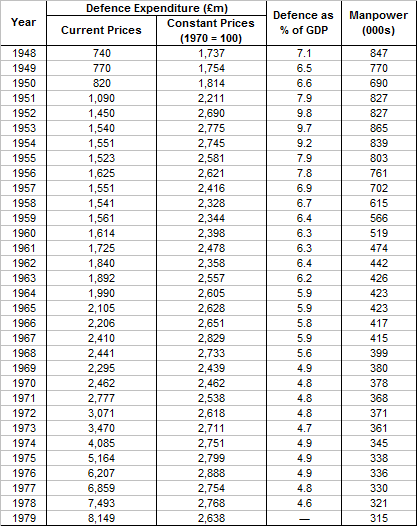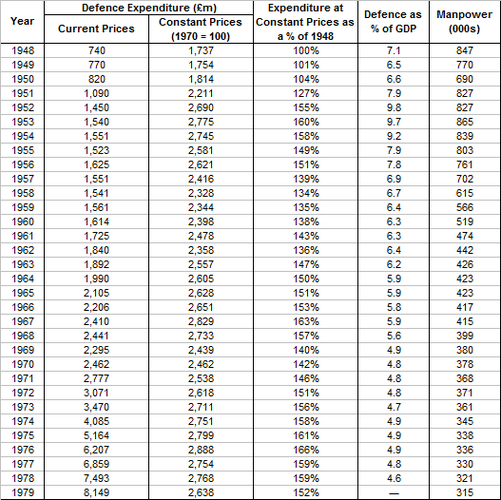NOMISYRRUC
ACCESS: Top Secret
- Joined
- 28 September 2008
- Messages
- 2,332
- Reaction score
- 3,755
On the subject of the Canberra I came across this passage in Tony Butler's British Secret Projects 3: Jet Bombers Since 1949 on the Internet Archive whilst researching my next post.
Air Britain's The British Aircraft Specifications File says that a modified Canberra B.8 was a contender to Specification F.44/46 (which the book said was won by the Meteor NF.11) but the specification was dated 24.01.47 and the Canberra B.8 didn't exist then, unless they mean the B.5 from which it was developed.
The Gloster Meteor Night Fighter
According to Chaz Bowyer in Postwar Combat Aircraft: 2 Gloster Meteor a total of 3,545 Metors were built by Gloster and Armstrong Whitworth between 1944 and 1955 of which 3,239 were allotted British Service serials. It also said that Fokker built 300 Meteor F.8s 1951-54 plus another 30 F.8s from components supplied by Avions Fairey of Belgium.
According to Puthams Gloster Aircraft and Puthams Armstrong Whitworth Aircraft 1,067 Meteors were built by Armstrong Whitworth including 45 F.4s, 430 F.8s and all 592 Meteor night fighters. The firm delivered the 1,067 aircraft 1949-55. The 589 production night fighters were delivered from November 1950 to May 1955. Armstrong Whitworth designed the night fighter version of the Meteor as well as building it.
The De Havilland Vampire and Venom Night Fighters
According to Postwar Military Aircraft: 5 De Havilland Vampire, Venom and Sea Vixen and Air Britain's Royal Air Force Aircraft WA100 to WZ999:
I like the idea of 931 Canberra night fighters being built to replace the Mosquito night fighters in the RAF instead of the Meteor, Vampire and Venom night fighters because the aircraft would have replaced the Mosquito four out of four roles instead of "only" three out of four roles. The others being light bomber, interdictor and medium range photographic reconnaissance.
However, development would have to begin in 1948 at the latest and production contracts to be let in March 1949 at the latest for deliveries to begin in November 1950. Even that's optimistic. The first 90 production Canberra B.2s were ordered in March 1949 and deliveries commenced in February 1951.
The 4 Canberra B.1 prototypes were ordered on 07.01.46 and were followed by the orders for 4 B.2 & one PR.3 prototypes in 1948. Only the first pair of B.2 prototypes was built because the last pair was transferred to the first production contract with new serial numbers.
What if XV177 and XV181 were instead completed as prototype night fighters? I suspect that wouldn't be early enough to have deliveries of the Canberra night fighter begin in November 1950. I think the prototypes would have to be ordered at the same time as the B.1 prototypes, i.e. 07.01.46.
The Canberra looks to large to be navalised so we'd still have to have the Sea Venom or an equivalent aircraft for the RN, RAN and Aéronavale.
He then describes the English Electric P.12 Canberra all-weather fighter project dated 05.03.56.It is worth taking a quick look at a proposed fighter Canberra. In June 1949, with just 12 hours of test flying completed, test pilot Wg Cdr R P Beamont had written that ‘with only minor modifications to the existing design a night fighter variant could be produced for Squadron Service...which would compare favourably in performance with the proposed interim types [de Havilland Vampire and Gloster Meteor], and would most probably exceed them in rate of climb, endurance, operational ceiling and firepower’.
Air Britain's The British Aircraft Specifications File says that a modified Canberra B.8 was a contender to Specification F.44/46 (which the book said was won by the Meteor NF.11) but the specification was dated 24.01.47 and the Canberra B.8 didn't exist then, unless they mean the B.5 from which it was developed.
The Gloster Meteor Night Fighter
According to Chaz Bowyer in Postwar Combat Aircraft: 2 Gloster Meteor a total of 3,545 Metors were built by Gloster and Armstrong Whitworth between 1944 and 1955 of which 3,239 were allotted British Service serials. It also said that Fokker built 300 Meteor F.8s 1951-54 plus another 30 F.8s from components supplied by Avions Fairey of Belgium.
According to Puthams Gloster Aircraft and Puthams Armstrong Whitworth Aircraft 1,067 Meteors were built by Armstrong Whitworth including 45 F.4s, 430 F.8s and all 592 Meteor night fighters. The firm delivered the 1,067 aircraft 1949-55. The 589 production night fighters were delivered from November 1950 to May 1955. Armstrong Whitworth designed the night fighter version of the Meteor as well as building it.
The De Havilland Vampire and Venom Night Fighters
According to Postwar Military Aircraft: 5 De Havilland Vampire, Venom and Sea Vixen and Air Britain's Royal Air Force Aircraft WA100 to WZ999:
- 94 Vampire night fighters were built. This included the prototype, 78 production aircraft for the RAF which were delivered from March 1951 to June 1952 and 15 that were exported (14 to Italy and one to Switzerland).
- 283 Venom De Havilland fighters were built. That is:
- 2 prototypes (one Mk 2 and one Mk 3);
- 90 Mk 2 for the RAF delivered from September 1952 to April 1955;
- 129 Mk 3 for the RAF delivered September 1953 to May 1956; and
- 62 Mk 51 for Sweden that were delivered from 11.12.52 to 15.07.57.
I like the idea of 931 Canberra night fighters being built to replace the Mosquito night fighters in the RAF instead of the Meteor, Vampire and Venom night fighters because the aircraft would have replaced the Mosquito four out of four roles instead of "only" three out of four roles. The others being light bomber, interdictor and medium range photographic reconnaissance.
However, development would have to begin in 1948 at the latest and production contracts to be let in March 1949 at the latest for deliveries to begin in November 1950. Even that's optimistic. The first 90 production Canberra B.2s were ordered in March 1949 and deliveries commenced in February 1951.
The 4 Canberra B.1 prototypes were ordered on 07.01.46 and were followed by the orders for 4 B.2 & one PR.3 prototypes in 1948. Only the first pair of B.2 prototypes was built because the last pair was transferred to the first production contract with new serial numbers.
What if XV177 and XV181 were instead completed as prototype night fighters? I suspect that wouldn't be early enough to have deliveries of the Canberra night fighter begin in November 1950. I think the prototypes would have to be ordered at the same time as the B.1 prototypes, i.e. 07.01.46.
The Canberra looks to large to be navalised so we'd still have to have the Sea Venom or an equivalent aircraft for the RN, RAN and Aéronavale.
Last edited:


